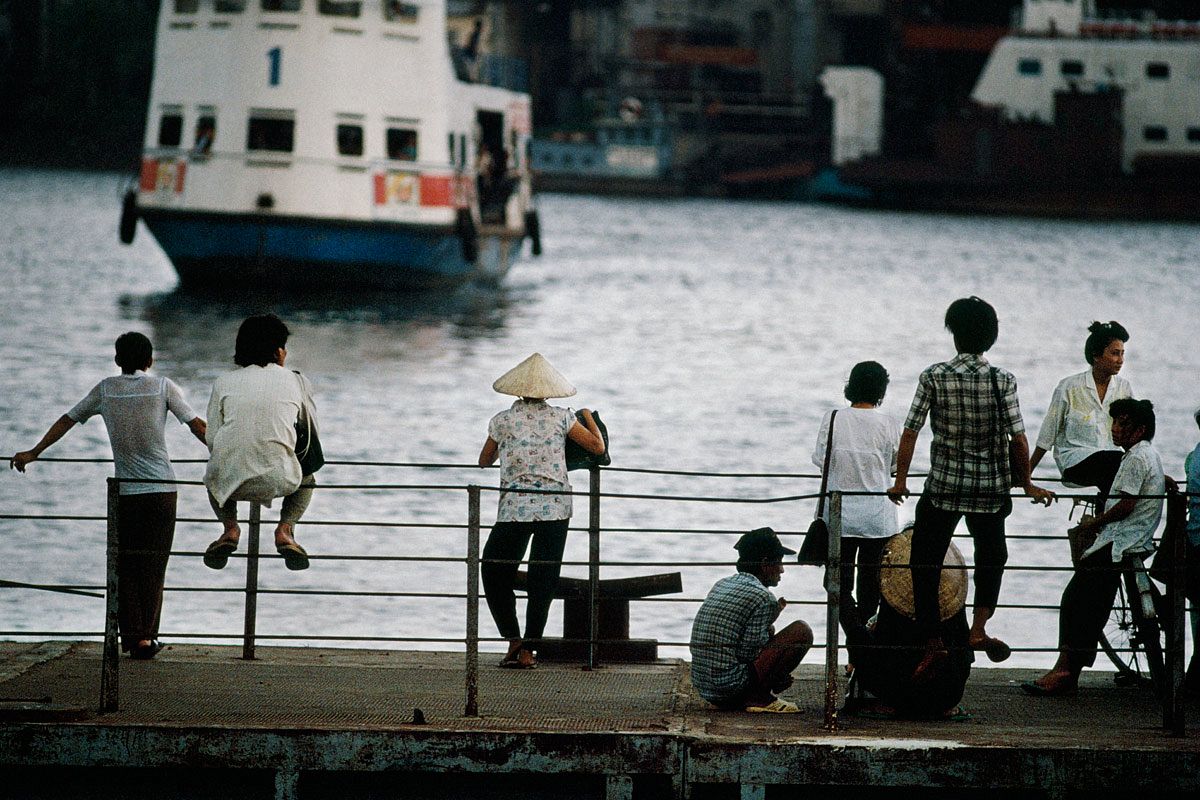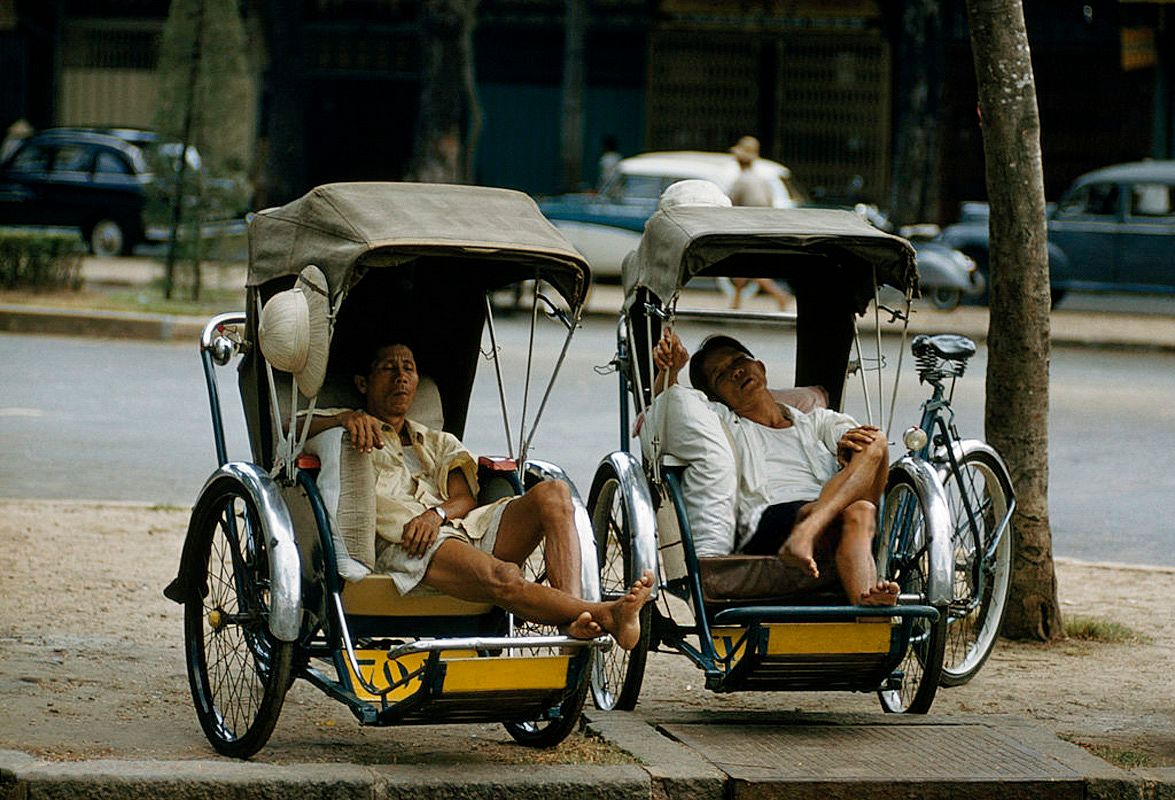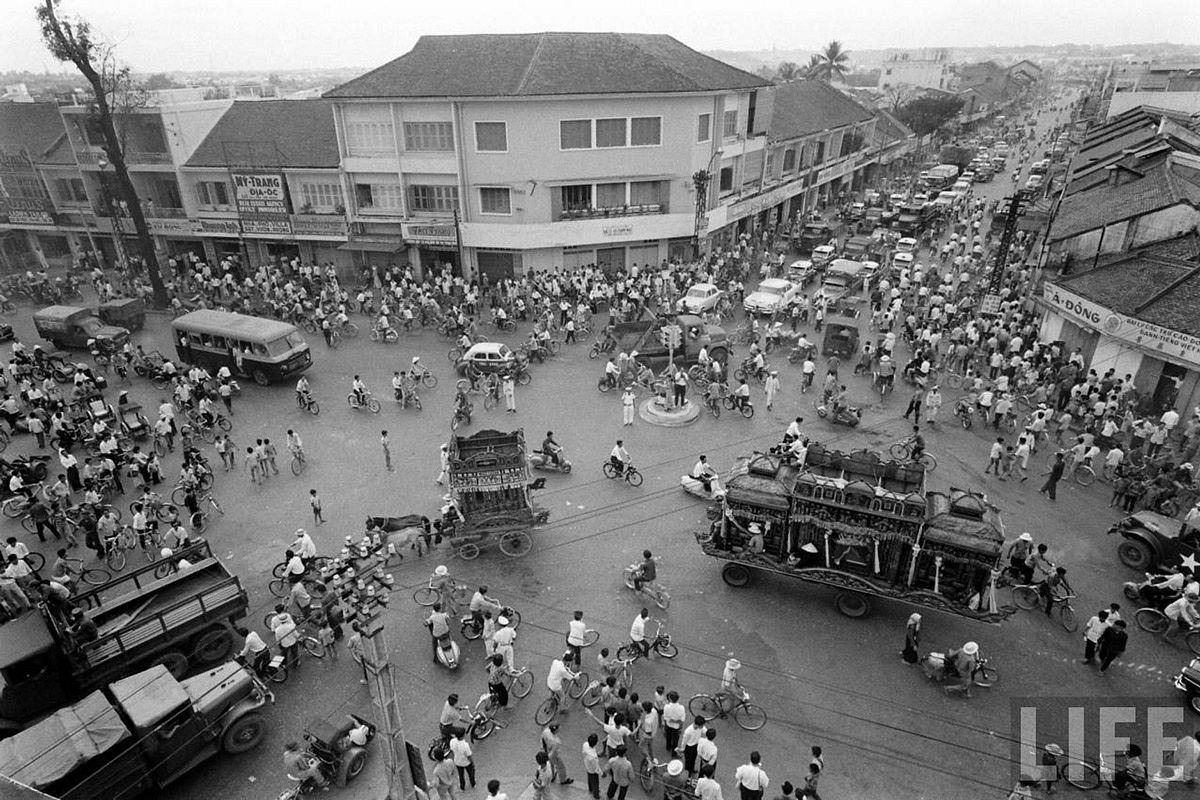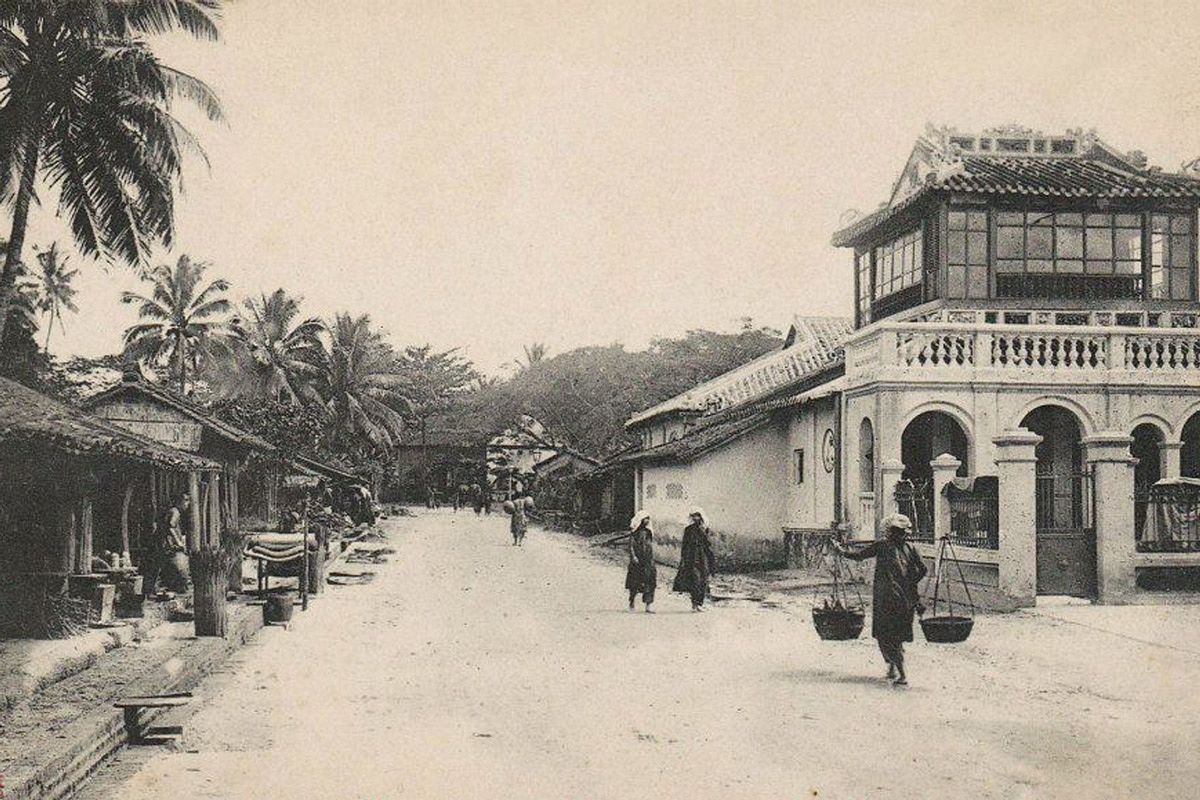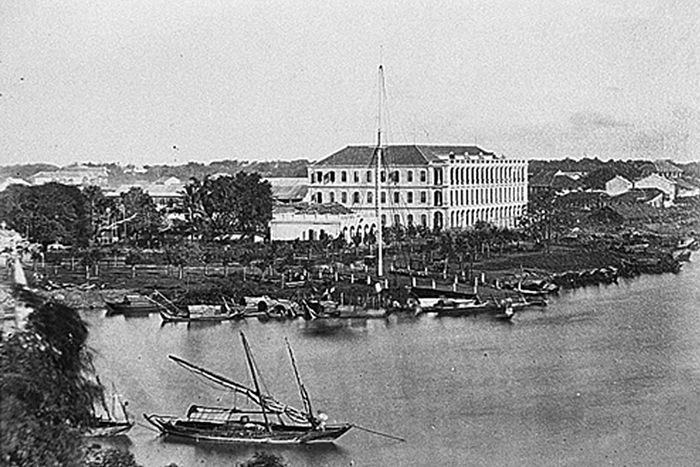Home to a tramway terminus, a grand hotel and the first United States Embassy in Saigon, Hàm Nghi's 20th-century story mirrors Vietnam's tumultuous journey. This is the second installment of a two-part article. For part one, click here.
Hàm Nghi Boulevard attained its current length of 988 meters in the period after 1910, when the railway atelier was relocated to Dĩ An and extensive marshland drainage permitted the creation of the new Halles Centrales (Bến Thành Market) with its spacious square, together with a much larger railway terminus in the area occupied today by 23-9 Park. By 1914, the twin roads Krantz and Duperré stretched all the way from the Saigon River to the Place du Marché, now known as Quách Thị Trang Square (see The Changing Faces of Sai Gon Railway Station).

The development of the boulevard as depicted in maps of 1898 and 1920.
In 1914, a new railway headquarters building was installed at 139 Boulevard de la Somme, overlooking the new market square (see Vietnam Railways Building). From that date onwards, passenger trains on the Saigon-Mỹ Tho and newly opened North-South lines no longer ventured beyond the new building along the boulevard, but the old track was retained in order to facilitate freight train access to the Saigon port via the swing bridge across the Arroyo Chinois (Bến Nghé Creek), which had been installed in 1903. In 1911, a tramway line was also installed on the boulevard, and in subsequent years the Rue Chaigneau junction became an important tramway terminus.
During the Great War of 1914-1918 (World War I), more than 92,000 Vietnamese men fought in the French armed forces, and at least 12,000 of these are believed to have lost their lives during that conflict. Numerous war memorials were subsequently built in Saigon (see Hùng King Temple) and on April 22, 1920, the Rues Krantz and Duperré (then still known to many people as the Boulevard de Canton) were reunited and named Boulevard de la Somme, after one of the First World War’s bloodiest battles.
In the wake of the violence which attended the 1919 Vietnamese boycott of Chinese traders, many Cantonese residents of the surrounding streets relocated to Chợ Lớn for safety. However, several popular Chinese restaurants on the Boulevard de la Somme remained in operation, and as tourism started to develop in the mid-1920s, numerous small hotels and guesthouses also appeared. Then in 1927, plantation owner Trần Quang Ẩn opened the 60-room Grand Hotel d'Annam at 117 Boulevard de la Somme, which would become one of the most popular hotels in the city during the 1930s and 1940s.

A CFTI electric tram on boulevard de la Somme in the 1930s.
In 1949, having suffered numerous setbacks in the First Indochina War, the French decided to offer limited independence to Vietnam within the context of a French Union, leading to the creation of the State of Vietnam, with the former King Bảo Đại as head of state. The United States of America immediately opened full diplomatic relations with the new entity, and in 1950 the first United States Embassy building was inaugurated at 39 Boulevard de la Somme. After 1955, this building – the “American Legation” described by Graham Greene in his novel The Quiet American – served for 12 years as the American Embassy to the Republic of Vietnam. In 1967, in the wake of the bombing on March 30, 1965, the US diplomatic mission was relocated to a more secure compound at 4 Thống Nhất (Lê Duẩn) Boulevard.

The first US Embassy building at 39 Hàm Nghi in the early 1960s.
Following the establishment of the Republic of Vietnam in 1955, the Boulevard de la Somme was renamed Boulevard Hàm Nghi, in memory of the eighth Nguyễn dynasty monarch Hàm Nghi (ruled 1884–1885), who left Huế to join the Cần Vương insurgency against French occupation forces. Replaced on September 19, 1885 by his brother Đồng Khánh (1885-1889), Hàm Nghi was captured by the French on November 1, 1888 and exiled to Algeria on December 12, 1888.

King Hàm Nghi (1884-1885).
Sixty years later, the boulevard still goes by that same name.

Hàm Nghi street seen in 1967-68. Photo by John Beck.

Tim Doling is the author of the walking tour book Exploring Hồ Chí Minh City (Nhà Xuất Bản Thế Giới, Hà Nội, 2014) and also conducts Heritage Tours of Saigon and Chợ Lớn. For more information, visit www.historicvietnam.com.
[Top image: Hàm Nghi street in 1972. Photo by Raymond Depardon.]


